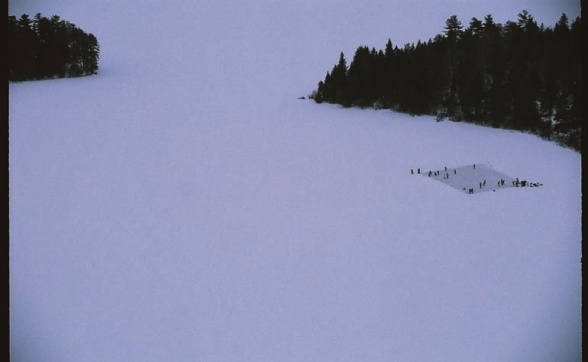Mark Lewis

Mark Lewis, Algonquin Park, September (video still), 2001

Mark Lewis, Algonquin Park, September (video still), 2001
Mark Lewis, Algonquin Park, September (video still), 2001
‘The photographic image haunts film and that’s one of the reasons why film remains "in-between" – in-between photography and video, and perhaps also between painting and digital media.’ Mark Lewis
Mark Lewis’s (b. 1957, Hamilton, Canada) work functions on many levels: it appears anti-Hollywood, anti-narrative and opposed to the temporal illusions of cinema, whilst establishing its own space and creating an alternative form of comprehensible narrative and illusion. In drawing liberally from film history, and in taking apart and re-assembling cinematic mechanisms and myths, Lewis helps renew our fascination with an idea, a scene, a fragment of cinematic memory. He considers his work as only partially cinema, but utilizes certain techniques and inventions used during cinema’s history to create acute perception in the viewer.
For the International 02, Lewis proposed two short films that would each address the question of the pictorial condition in film, referencing some of the very simple (but semiotically-complex) films of the Lumiere brothers. Owing much to the tradition of nineteenth-century Romanticism as expressed in paintings by Caspar David Friedrich, Arnold Bocklin and others, both films appeared to document a landscape beyond real time and place. They operated as simultaneous advertisements for tourism and the sublime. As such, they used the idea of arrival and departure as a motif – one reflective of Liverpool’s history.
Algonquin Park, September (2001) ‘It went very well and I was very pleased with the crew, the location, the weather conditions, and so on. Everything happened as planned and we couldn't have asked for more ideal conditions (beautiful steam rising off the lake and so on).’ Email correspondence, 14 September 2001, Mark Lewis
Shot on Super 35mm with 1:2:35 ratio (simulating cinemascope), Algonquin Park, September (2001) consisted of a single still shot of a lake in North Ontario. Over time, an island emerges slowly from the mist and a light became gloriously seductive and filmic. A lone boat traced its way across the surface of the lake, from the right to the left of the screen. Nothing appeared to happen. The film stops. Two minutes and forty-six seconds have elapsed. The sudden and unexpected ending recalls the Lumiére brothers’ film A Boat Leaving the Harbour (c.1896).
Mark Lewis at Liverpool Biennial 2002
Algonquin Park, September, 2001
Film
Commissioned by Liverpool Biennial 2002 in association with FACT (Foundation of Art and Creative Technology)
Exhibited at Tate Liverpool
Supported by
The Canadian High Commission
Liverpool Biennial
55 New Bird Street
Liverpool L1 0BW
- T +44 (0)151 709 7444
- info@biennial.com
Liverpool Biennial is funded by
Founding Supporter
James Moores